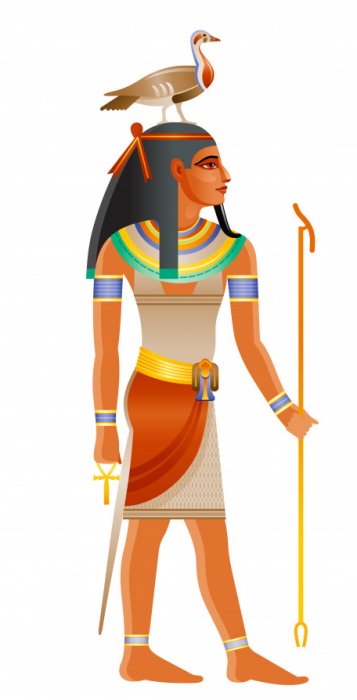Gengen Wer – Goose God Who Guarded The Celestial Egg Containing The Life Force In Egyptian Beliefs
A. Sutherland - AncientPages.com - The primeval goose shares a close relation with certain deities from ancient Egyptian mythology. Among these is Gengen-Wer, an archaic Egyptian god represented by a goose.
This deity was seen as an embodiment of creative energy and was linked to the myths surrounding the creation of the world in ancient times.
 Facsimile Painting of Geese, Tomb of Nefermaat and Itet ca. 2575–2551 BC at Meidum. The above facsimile was once part of a larger scene discovered on the north wall in the tomb chapel of Itet, the wife of the vizier Nefermaat, and likely the daughter-in-law of King Snefru. The original of this artwork is now in the Egyptian Museum, Cairo. Image source.
Facsimile Painting of Geese, Tomb of Nefermaat and Itet ca. 2575–2551 BC at Meidum. The above facsimile was once part of a larger scene discovered on the north wall in the tomb chapel of Itet, the wife of the vizier Nefermaat, and likely the daughter-in-law of King Snefru. The original of this artwork is now in the Egyptian Museum, Cairo. Image source.
In the mythology of ancient Egypt, the goose held a revered status. It was perceived as an emblem representing the soul of those who had passed away. This symbolism is often evident in the tomb paintings and reliefs from this historical period in Egypt.
This bird was linked with the goddess Isis, the goddess of motherhood, fertility and magic, but also with god Gengen-Wer, once revered figure in Egyptian mythology but has since faded into obscurity.
Gengen-Werwas renowned for symbolizing the potent force of creation, an attribute depicted through the emblematic carrying of an egg - a universal symbol for the genesis of life.
The god's name originates from "honker" (gengen) and "great" (wer), so he is Gengen-Wer, also called "Cackler."
The goose was also closely associated with the earth god Geb, often called the "great cackler." The goose was Geb's sacred animal and symbol, and in this form, Geb was the one who laid the first egg from which the sum emerged as the Benu bird, an ancient Egyptian deity linked with the sun, creation, and rebirth.
According to Egyptian mythology, the Bennu was a self-created being that played a significant role in creating the world. It was said to be the ba of Ra, which enabled Atum's creative actions. Besides, the hieroglyph for the name "Geb" was a goose, so this god was often symbolically assigned the head of a goose when depicted.
In this appearance, he symbolizes the source of the worldwide concept about the goose that laid the egg from which the world was hatched.
The goose also symbolized other deities, including the god Harpokrates Harpa-Khruti (Horus the Child), known by the Greeks as the god of silence, and Hapi (Hapy), the early Egyptian god of the Nile River, fertility, life, and abundance.
Egyptian Goose God Gengen Wer. Credit: Adobe Stock - Olga Che
The deities of ancient Egypt were frequently linked with narratives of creation and beliefs about the afterlife. These elements held substantial significance in the lives of the ancient Egyptians.
Therefore, Gengen-Wer is mentioned in descriptions of the underworld, death, and the afterlife in which the deceased is said to be the god's egg or guard it.
In the "Pyramid Texts," the deceased flies to heaven as a goose.
Various species of geese are displayed in Egyptian art, and the god Gengen-Wer can be one of their representations. Traditionally, the goose also represented Amun, the god of the air and one of the eight primordial Egyptian deities. Amun's name first appeared in the Pyramid Texts of Dynasty V and the Old Kingdom creation myth known as the Ogdoad of Hermopolis as one of the eight deities closely associated with the concept of the world's creation. In the Ogdoad's creation activities, a (blue) lotus flower immediately transforms into Nefertum.
Amun ('the hidden one') can appear as a creator god and is connected with the goose, which is sacred to him. However, his identity in the Egyptian religion has changed much over the centuries.
In one version of the creation myth, an egg was laid on the original mound of creation by the celestial goose ('the great cackler'), out of which emerged the sun god Ra, the first of the gods.
This creative aspect remained a part of Amun's nature.
However, during the Amarna Period and Akhenaten's reign, the Amun's image had no right to exist, and the worship of Amun was replaced with that of Aton.
In Egyptian religion, a goose was frequently an offering –food to the gods and the deceased. According to tradition, the goose was a ritually offered symbol of the gods' enemies. Several animals like cats, baboons, ibises, crocodiles, dogs, and serpents (to name a few) were sacred to many gods in the Egyptian pantheon, but the goose was not.
However, goose worship was prevalent in specific locations, like Karnak, where a flock of sacred geese was kept on the temple lake in Amun's Great Temple.
Written by – A. Sutherland - AncientPages.com Senior Staff Writer
Updated on February 8, 2024
Copyright © AncientPages.com All rights reserved. This material may not be published, broadcast, rewritten or redistributed in whole or part without the express written permission of AncientPages.com
Expand for referencesReferences:
Richard H. Wilkinson: The world of the gods in ancient Egypt
Wilkinson, R. The complete temples of Ancient Egypt
More From Ancient Pages
-
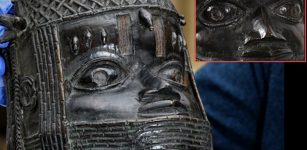 Benin Bronze Sculpture Looted By British Soldiers In Nigeria – Returns Home
Archaeology | Apr 2, 2021
Benin Bronze Sculpture Looted By British Soldiers In Nigeria – Returns Home
Archaeology | Apr 2, 2021 -
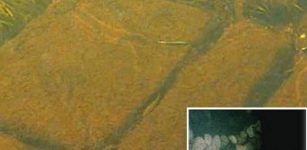 Remarkable Man-Made Underwater Structures Could Rewrite History Of Wisconsin
Featured Stories | Aug 22, 2018
Remarkable Man-Made Underwater Structures Could Rewrite History Of Wisconsin
Featured Stories | Aug 22, 2018 -
 Mystery Of The Ancient Reptilian Gods Remains A Complex Subject – Alien Worlds – Part 2
Ancient Mysteries | Feb 9, 2022
Mystery Of The Ancient Reptilian Gods Remains A Complex Subject – Alien Worlds – Part 2
Ancient Mysteries | Feb 9, 2022 -
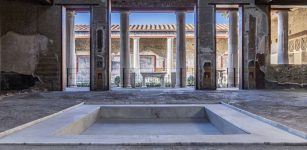 Look Inside A Restored Pompeii House – A Unique Glimpse Into Life In Italy’s Ancient City
Archaeology | Jan 11, 2023
Look Inside A Restored Pompeii House – A Unique Glimpse Into Life In Italy’s Ancient City
Archaeology | Jan 11, 2023 -
 The Mixtec – Mysterious Very Advanced Culture Of The Foremost Goldsmiths Of Mesoamerica
Civilizations | Dec 2, 2017
The Mixtec – Mysterious Very Advanced Culture Of The Foremost Goldsmiths Of Mesoamerica
Civilizations | Dec 2, 2017 -
 On This Day In History: Chaldean Account Of The Deluge Translated And Presented For The First Time – On Dec 3, 1872
News | Dec 3, 2016
On This Day In History: Chaldean Account Of The Deluge Translated And Presented For The First Time – On Dec 3, 1872
News | Dec 3, 2016 -
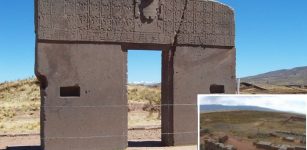 Underground City And Pyramid Discovered At Tiahuanaco, Bolivia
Archaeology | Aug 3, 2018
Underground City And Pyramid Discovered At Tiahuanaco, Bolivia
Archaeology | Aug 3, 2018 -
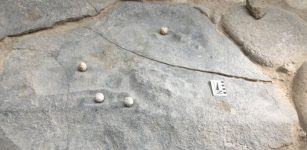 Mysterious Stone Spheres Could Be From Ancient Greek Board Game – Scientists Say
Archaeology | Sep 30, 2022
Mysterious Stone Spheres Could Be From Ancient Greek Board Game – Scientists Say
Archaeology | Sep 30, 2022 -
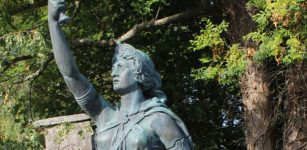 The Iceni’s Queen Boudicca Who Revolted Against Roman Rule
Featured Stories | Apr 3, 2023
The Iceni’s Queen Boudicca Who Revolted Against Roman Rule
Featured Stories | Apr 3, 2023 -
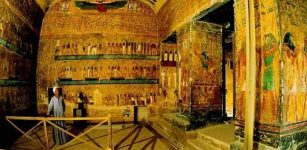 Tomb Of Pharaoh Seti I Is The Largest Tomb In The Valley Of The Kings
Ancient History Facts | Feb 5, 2016
Tomb Of Pharaoh Seti I Is The Largest Tomb In The Valley Of The Kings
Ancient History Facts | Feb 5, 2016 -
 Voice Belonging To 3,000-Year-Old Egyptian Mummified Priest – Recreated
Archaeology | Jan 28, 2020
Voice Belonging To 3,000-Year-Old Egyptian Mummified Priest – Recreated
Archaeology | Jan 28, 2020 -
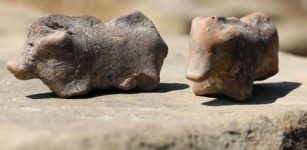 Unique 3,500-Year-Old Clay Pig Figurines Used As Children’s Toys Found In Poland
Archaeology | Aug 19, 2020
Unique 3,500-Year-Old Clay Pig Figurines Used As Children’s Toys Found In Poland
Archaeology | Aug 19, 2020 -
 Unusual Ancient Winged Half-Human And Half-Animal Divine Creature With Supernatural Powers
Artifacts | Jul 30, 2019
Unusual Ancient Winged Half-Human And Half-Animal Divine Creature With Supernatural Powers
Artifacts | Jul 30, 2019 -
 4 Things Ancient Greeks And Romans Got Right About Mental Health
Featured Stories | Aug 30, 2024
4 Things Ancient Greeks And Romans Got Right About Mental Health
Featured Stories | Aug 30, 2024 -
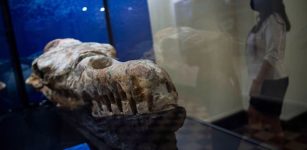 Huge 36-Million-Year-Old Skull Of Fearsome Marine Monster Discovered In Peru
Fossils | Mar 21, 2022
Huge 36-Million-Year-Old Skull Of Fearsome Marine Monster Discovered In Peru
Fossils | Mar 21, 2022 -
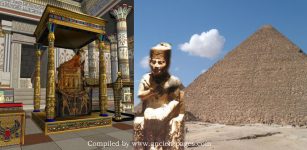 Why Should There Be An Iron Throne Inside The Cheops’ Pyramid?
Archaeology | Apr 16, 2018
Why Should There Be An Iron Throne Inside The Cheops’ Pyramid?
Archaeology | Apr 16, 2018 -
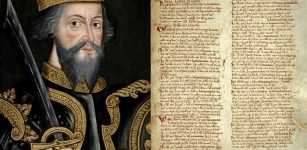 Re-Writing History Of England’s Domesday Book Of William I The Conqueror
Archaeology | Nov 27, 2018
Re-Writing History Of England’s Domesday Book Of William I The Conqueror
Archaeology | Nov 27, 2018 -
 Pre-Columbian Societies Declined 2,000 Years Ago Due To Sea Level Fall
Archaeology | Dec 22, 2021
Pre-Columbian Societies Declined 2,000 Years Ago Due To Sea Level Fall
Archaeology | Dec 22, 2021 -
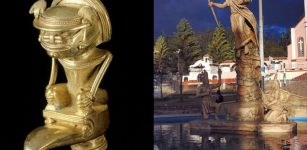 Legend Of Bochica And Mysterious Ancient Stone Structures In Colombia
Featured Stories | Jun 5, 2016
Legend Of Bochica And Mysterious Ancient Stone Structures In Colombia
Featured Stories | Jun 5, 2016 -
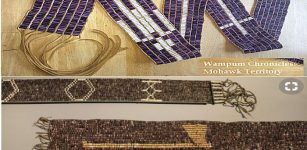 Why Were Wampum Belts Important To Native Americans?
Featured Stories | May 10, 2018
Why Were Wampum Belts Important To Native Americans?
Featured Stories | May 10, 2018

